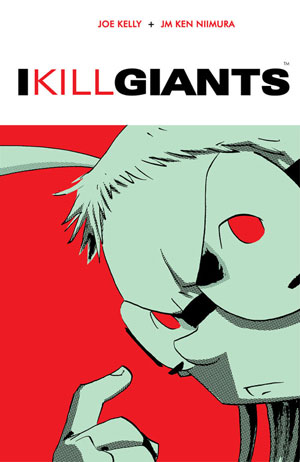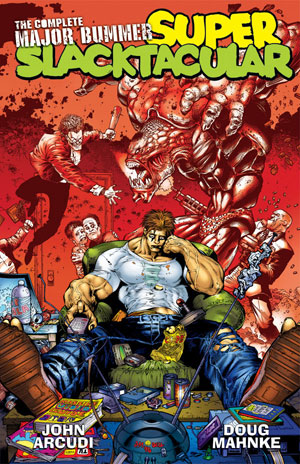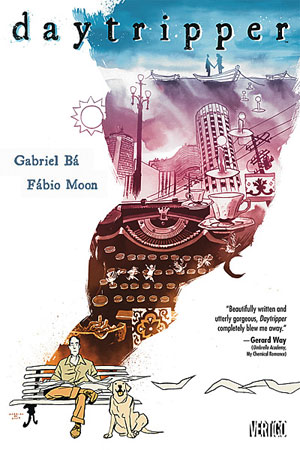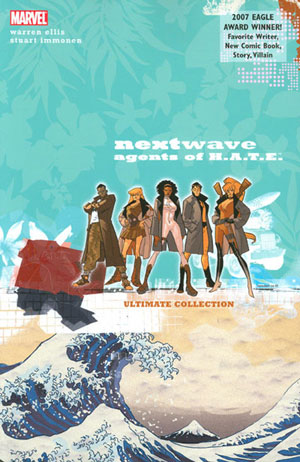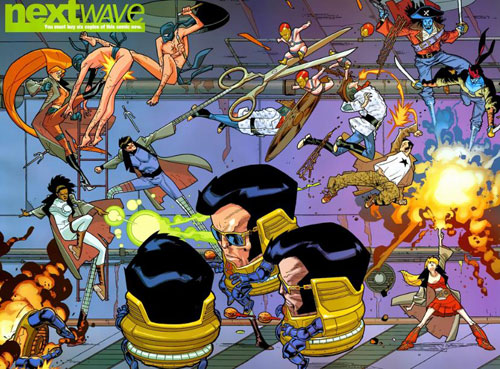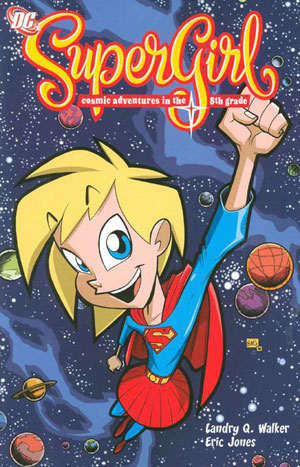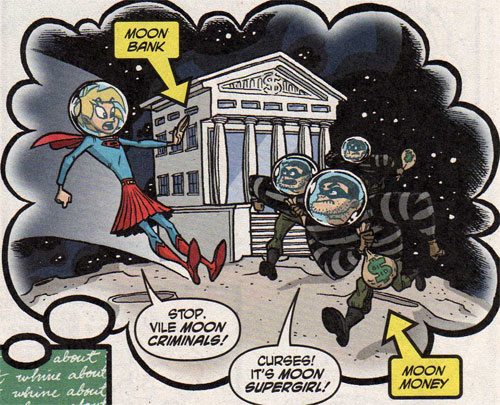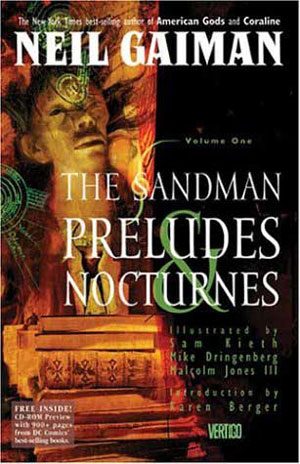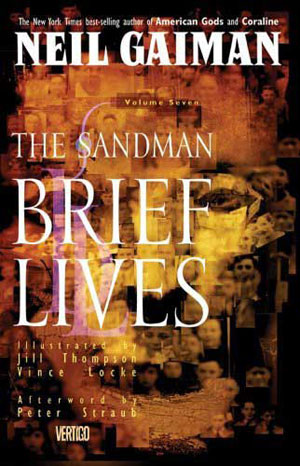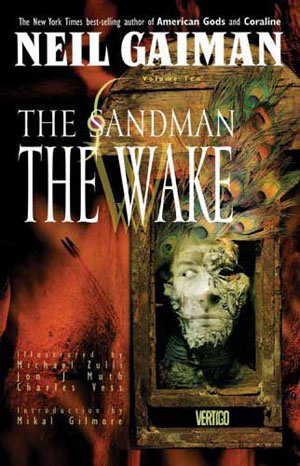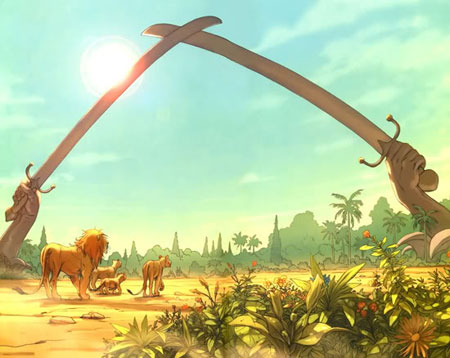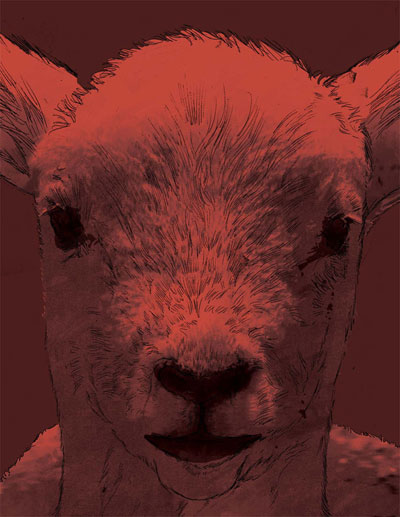
Duncan the Wonder Dog: Show One
Awright, lookit this here. It’s a colossal 400-page graphic novel that pretty much came out of nowhere last year, by a guy named Adam Hines, who has little formal art training — and he’s planning on making another half-dozen or more parts of the story over the next quarter century.
Man, where to start with this? The scope of this story is dauntingly huge, especially for a guy like me who’s used to doing light-speed reviews of single-issue comics. But the story, plotline, characters, and artwork on this are all amazing — and the moral questions raised by the story are really a little bit terrifying. How the heck to deal with the entire thing…?
Let’s go with the general background of the story — namely, talking animals. The story is set in a world much like our own, but animals — all animals — have human-level intelligence and can speak. You’d expect some massive changes to the world, right? And there are some — one of the main characters is a wealthy gibbon named Voltaire who runs a megacorporation and lives with his human lover. Animal rights legislation is hotly debated in Congress, and the leading animal rights terrorist organization is, appropriately enough, run almost entirely by animals.
If you’re a sci-fi fan like me, you go into some kinds of stories with certain expectations. We’ve all watched “Star Trek,” right? When the Enterprise encounters a new sapient life form, what do they do? They recognize that it has certain rights and privileges that it gets just because it’s able to think and reason intelligently. But things don’t work like that in the world of “Duncan the Wonder Dog.”
There’s a scene early in the story that I saw reprinted elsewhere, and it really sold me on getting and reading the book. It’s just a short vignette with a human fisherman and a water bird who are working together. The bird is upset because the fisherman isn’t upholding his end of the bargain. The deal was that the fisherman would get the big fish and the bird would get the small fish. The fisherman says, too bad, I need all the fish today — you can have the small fish again tomorrow. “I’m one of the only fishermen who will work you without a snare, but I can put one on if I need to.” The bird knows he’s beat, and he says, “I want… I want to eat today.”
Just that little bit — just five panels all together — completely tore my heart out.
This isn’t a world where humans accept that animal sapience entitles them to equal rights. This is a world that operates almost exactly the way our world works normally — just with the added cruelty that they know their hamburgers came from someone who can think the way they do. In fact, there’s another scene where a couple of men try to persuade a cow on a trailer to go walk into that building over there — all your friends are in there, they say, it’s not like we’d feed you and take care of you and then just send you into a building to be killed, would we? And the cow eventually reveals that she noticed lots of hoofprints going in and none coming out, so she knew it was a slaughterhouse. That’s a sharp, deductive mind in a freakin’ cow — and people in that world valued her only as a steak.
Adam Hines is certainly interested in animal rights, but he doesn’t go and make all humans the villains and all animals the heroes. The story’s most prominent and frightening antagonist is Pompeii, a Barbary macaque who leads the terrorist group ORAPOST. She bombs a university and murders multiple humans in cold blood. In a flashback, after a human ally of ORAPOST is killed, she declares that she wants to cut out the dead woman’s unborn baby to keep for her own. She later discovers and reads a woman’s diary detailing a loving and complex family life — including great amounts of compassion and love for the family’s pets — Pompeii destroys the diary, unable to deal with any evidence of humans and animals living together cooperatively.
To be honest, I see a lot of what drives the story forward — and certainly affects how readers respond to it — as being less about animal rights and human rights, and more about simple empathy. If you have empathy, it’s easy to put yourself in the, um, paws of creatures that have the intellectual capacity of humans but are considered, at best, property. If you don’t have empathy, you don’t see what the fuss is about.
In a way, it’s a story about human slavery and cultural conflicts. We can be a heartlessly cruel species to each other — it used to be you could own and sell people, and there are still people who think other kinds of people are worth less than others. There are countries where the under-privileged are as crushed, as abused, as exploited as valuable pack animals. Are the humans in the story who are comfortable owning and eating sentient creatures really all that different from the rest of us?
I could go on and on about this forever, but suffice it to say — the philosophical and moral background of this story is absolutely fascinating to me.
Art-wise, what’re we looking at? I gotta say, it’s definitely something else. In places, the art is cartoonish — not a bad thing, as we’ve discussed before. Simple cartooning often does a better job of communicating emotion than detailed artwork. But the detailed artwork is also in here. There are deeply beautiful landscapes here, abstract images that go on for page after page, and portions of the story told through typography. And again, this was all created by one guy, over the course of several years, just because he wanted to tell the story and draw the artwork.
Verdict: I think it’s fairly clear this is a thumbs up. Great art, great story, and mind-expanding philosophy? Go pick it up.

